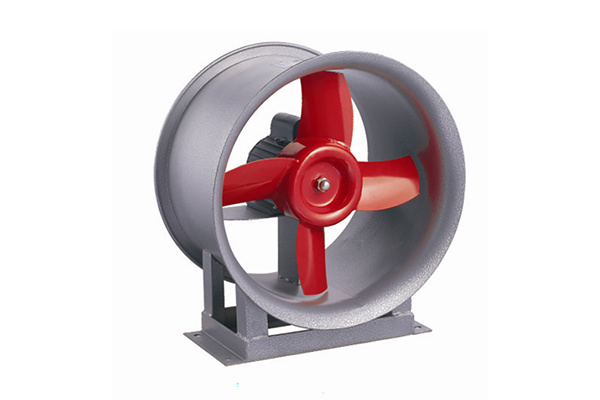Information Details
Fire Engineer Smoke Control System Chapter Practice Questions
Release time:
2021-07-07 10:24
1. The following places should use a mechanical pressurized air supply system ()
A. Smoke-proof stairwell of a residential building with a height of 55m
B. Common foyer of a medical building with a height of 25m
C. Common foyer shared by a scissor stairwell and a fire elevator foyer in a building with a height of 54m
D. A hotel with a height of 50m, where the smoke-proof stairwell has an independent foyer with one door
Swipe to view the answer
Reference answer: C
Answer analysis: Public buildings, industrial buildings with a height greater than 50m, and residential buildings with a height greater than 100m must use a mechanical pressurized air supply system for their smoke-proof stairwells, independent foyers, common foyers, and fire elevator foyers, so AB can be omitted. For public buildings, industrial buildings with a height less than or equal to 50m, and residential buildings with a height less than or equal to 100m, a mechanical pressurized air supply system must be set up when the common foyer and fire elevator foyer are shared. When the mechanical pressurized air supply outlet is set at the top of the foyer or directly opposite the entrance wall of the foyer, the stairwell can use a natural ventilation system; when the mechanical pressurized air supply outlet is not set at the top of the foyer or directly opposite the entrance wall of the foyer, the stairwell should use a mechanical pressurized air supply system. For public buildings, industrial buildings with a height less than or equal to 50m, and residential buildings with a height less than or equal to 100m, when using an independent foyer with only one door connecting to a corridor or room, a mechanical pressurized air supply system can be set only in the stairwell; when the independent foyer has multiple doors, the stairwell and independent foyer should each have their own mechanical pressurized air supply system.
2. The smoke and exhaust systems in buildings play an important role in mitigating fire disasters, so they must be periodically maintained according to regulatory requirements. Among the following inspection items, which one is an annual inspection item ()?
A. Smoke curtain activation test
B. Manual activation of the smoke exhaust outlet
C. System linkage test
D. System power supply line inspection
Swipe to view the answer
Reference answer: C
Answer analysis: The smoke curtain activation test and power supply line inspection are quarterly, manual activation of the smoke exhaust outlet is semi-annual, and linkage test is annual.
3. When accepting the smoke and exhaust system of a building, the acceptance criteria for system engineering quality should comply with the specifications. Among them, which one is classified as Class A non-compliance ()?
A. No quality management inspection records during the construction process were found upon inspection
B. The construction unit cannot provide design drawings or completion drawings during the on-site inspection
C. The surface of the duct has minor unevenness but is not damaged
D. The fan selection does not match the design
Swipe to view the answer
Reference answer: D
Answer analysis: According to the technical standards for smoke and exhaust systems in buildings GB51251-2017, Article 8.2.7, the acceptance criteria for system engineering quality, options AB are Class B, option C is Class C, and option D is Class A.
4. Which of the following statements about the requirements for natural ventilation facilities is incorrect ()?
A. Enclosed stairwells should have an openable window or opening with an area of ≥1㎡ at the highest point
B. The fire elevator foyer with a smoke control system should have openable windows facing different directions, with an area not less than 2㎡, and the common foyer and shared foyer should not be less than 3㎡
C. Openable windows facing different directions should have an effective area not less than 2% of the floor area of the refuge layer (room), and the area for each direction should not be less than 2㎡
D. Openable windows should be easy to open directly; if set high, a manual opening device should be installed at a height of 1.3m-1.5m from the ground.
Swipe to view the answer
Reference answer: B
Answer analysis: According to the specifications 3.2.1, enclosed stairwells and smoke-proof stairwells should have an openable window or opening with an area of not less than 1.0㎡ at the highest point; when the building height exceeds 10m, there should also be openable windows or openings with a total area of not less than 2.0㎡ on the outer wall of the stairwell every 5 floors, with a spacing of no more than 3 floors. A is correct. 3.2.2 When using natural ventilation, the area of openable windows or openings in independent foyers and fire elevator foyers should not be less than 2.0㎡, and in common foyers and shared foyers should not be less than 3.0㎡. There is no requirement for windows to be opened in different directions, so B is incorrect. 3.1.3 For public buildings, industrial buildings with a height less than or equal to 50m, and residential buildings with a height less than or equal to 100m, their smoke-proof stairwells, independent foyers, common foyers, shared foyers (except for shared foyers and fire elevator foyers) and fire elevator foyers should use a natural ventilation system; when a natural ventilation system cannot be set up, a mechanical pressurized air supply system should be used. The selection of the smoke control system should also comply with the following provisions:
1. When the independent foyer or shared foyer meets one of the following conditions, the stairwell may not be equipped with a smoke control system: 1) using fully open balconies or recesses; 2) having two or more openable windows facing different directions, with the area of each window in the independent foyer not less than 2.0㎡, and in the shared foyer not less than 3.0㎡. 3.2.3 Refuge layers (rooms) using natural ventilation should have openable windows facing different directions, with an effective area not less than 2% of the floor area of the refuge layer (room), and the area for each direction should not be less than 2.0㎡, C is correct. 3.2.4 Openable windows should be easy to open directly; if set high, a manual opening device should be installed at a height of 1.3m-1.5m from the ground, D is correct.
5. A fire detection agency conducted a linkage test on the smoke exhaust system of a certain building. The following test result does not meet the requirements ()?
A. When a certain normally closed smoke exhaust valve is opened, the smoke exhaust fan starts in linkage.
B. After a fire alarm, the mechanical smoke exhaust system activates all smoke exhaust valves, and the status signal should be fed back to the fire control room.
C. After the fire alarm, the smoke exhaust fan in the smoke compartment of the fire area should be activated, while the smoke exhaust fans in other areas should not be activated.
D. In mechanical smoke exhaust areas that require supplementary air, the supplementary air system should be activated after the fire alarm.
Swipe to view the answer
Reference answer: B
Answer Analysis: The linkage debugging methods and requirements for mechanical smoke exhaust systems should comply with the following regulations: 1. When any normally closed smoke exhaust valve or smoke outlet opens, the smoke exhaust fan should be able to start in linkage. 2. It should be linked and debugged with the fire automatic alarm system. When the fire automatic alarm system issues a fire alarm signal, the mechanical smoke exhaust system should activate the relevant smoke exhaust valves or smoke outlets and smoke exhaust fans; the activated smoke exhaust valves or smoke outlets and smoke exhaust fans should be consistent with design and standard requirements, and their status signals should be fed back to the fire control room. 3. In mechanical smoke exhaust areas that require supplementary air, the supplementary air system should be activated after the fire is confirmed. 4. When the smoke exhaust system is shared with the ventilation and air conditioning system, the time for switching from the ventilation and air conditioning system to the smoke exhaust system after the fire automatic alarm system issues a fire alarm signal should comply with the provisions of this standard Article 5.2.3.
6. The following statements regarding the setting of pressurized air supply outlets that do not comply with regulations are () 1. Stairwells using direct injection pressurized air supply should have a normally open louver air supply outlet every 2-3 floors; 2. Each floor of the front room should have a normally open pressurized air supply outlet, and a manual opening device should be provided; 3. The wind speed of the air supply outlet should not exceed 15m/s; 4. The air supply outlet should not be located in areas blocked by doors.
A. 1
B. 2
C. 3
D. All
Swipe to view the answer
Reference answer: C
Answer Analysis: According to the specification 3.3.6, the setting of pressurized air supply outlets should comply with the following regulations: 1. Except for direct injection pressurized air supply methods, stairwells should have a normally open louver air supply outlet every 2-3 floors; 2. Each floor of the front room should have a normally closed pressurized air supply outlet, and a manual opening device should be provided; 3. The wind speed of the air supply outlet should not exceed 7m/s; 4. The air supply outlet should not be located in areas blocked by doors.
7. The mechanical pressurized air supply system should use ducted air supply and should not use civil construction air ducts. The air supply ducts should be made of non-combustible materials and have smooth inner walls. When the inner wall of the air supply duct is metal, the design wind speed should not exceed () m/s; when the inner wall of the air supply duct is non-metal, the design wind speed should not exceed () m/s.
A. 20, 15
B. 15, 25
C. 10, 20
D. 20, 25
Swipe to view the answer
Reference Answer: A
Answer Analysis: According to specification 3.3.7, the mechanical pressurized air supply system should use ducted air supply and should not use civil construction air ducts. The air supply ducts should be made of non-combustible materials and have smooth inner walls. When the inner wall of the air supply duct is metal, the design wind speed should not exceed 20m/s; when the inner wall of the air supply duct is non-metal, the design wind speed should not exceed 15m/s; the thickness of the air supply duct should comply with the current national standard "Ventilation and Air Conditioning Engineering Construction Quality Acceptance Specification" GB 50243.
8. The following control methods for smoke exhaust fans and supplementary air fans do not comply with regulations ()
A. Can be manually started on-site and can also be manually started from the fire control room
B. Can be automatically started by the fire automatic alarm system
C. When any smoke exhaust valve or smoke outlet in the system opens, the smoke exhaust fan and supplementary air fan should start automatically
D. The smoke exhaust fire damper should close automatically at 280℃ and cannot directly close the smoke exhaust fan and supplementary air fan
Swipe to view the answer
Reference answer: D
Answer Analysis: The control methods for smoke exhaust fans and supplementary air fans should comply with the following regulations: 1. On-site manual start; 2. Automatic start by the fire automatic alarm system; 3. Manual start from the fire control room; 4. When any smoke exhaust valve or smoke outlet in the system opens, the smoke exhaust fan and supplementary air fan should start automatically; 5. The smoke exhaust fire damper should close automatically at 280℃ and should interlock to close the smoke exhaust fan and supplementary air fan.
9. In a newly built office building, with a floor height of 6m, the calculated smoke exhaust volume for the smoke exhaust system design is 12000m/h. The result that meets the requirements for checking the design air volume of the smoke exhaust system is () m/h.
A. 13000
B. 15000
C. 17000
D. 18000
E. 20000
Swipe to view the answer
Reference Answer: D, E
Answer Analysis:
For places with a clear height not exceeding 6m, the smoke exhaust volume should be calculated at not less than 60m/(h*㎡), and the value should not be less than 15000m/h; the design air volume of the smoke exhaust system should not be less than 1.2 times the calculated air volume of the system. Therefore, the design air volume of this building should not be less than 18000m/h.
10. The correct statement regarding the control of the smoke prevention system is ()
A. The pressurized air supply fan should be able to start manually on-site and remotely
B. The pressurized air supply fan should automatically start through the fire automatic alarm system
C. When any normally closed pressurized air supply outlet in the system opens, the pressurized fan should be able to start automatically
D. When a fire is confirmed in the fire compartment, the normally closed pressurized air supply outlet and the pressurized air supply fan should be able to interlock and open within 15s
E. When a fire is confirmed in the fire compartment, the normally closed pressurized air supply outlet and all pressurized air supply fans in the stairwell should be able to interlock and open within 30s
Swipe to view the answer
Reference Answer: A, B, C, D
Answer Analysis:
According to specification 5.1.2, the startup of the pressurized air supply fan should comply with the following regulations: 1. Manual startup on site; 2. Automatic startup through the fire alarm system; 3. Manual startup from the fire control room; 4. The pressurized fan should be able to start automatically when any normally closed pressurized air supply outlet in the system is opened. 5.1.3 When a fire is confirmed in the fire compartment, the normally closed pressurized air supply outlets and the pressurized air supply fan should be able to activate within 15 seconds. The following regulations should also be met: all pressurized air supply fans in the stairwell of the fire compartment should be activated; the normally closed air supply outlets in the fire layer and the adjacent upper and lower layers, as well as the shared anteroom, should be opened, while the pressurized air supply fan is also activated.
RELATED INFORMATION







